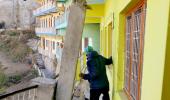'An earthquake of a slightly higher magnitude in the Western Himalayan region is going to be catastrophic -- not just because of the fragility of the region, but because of how densely we have occupied it.'

"Every year there is a massive landslide where people die; flash floods are recurring. The Chamoli disaster happened in 2021 and the entire world is aware of the Kedarnath tragedy in 2013. We know how delicate this place is, but we still do not learn from what has happened in the past," says Dr Vishal Singh, Senior Fellow and Executive Director of the Dehradun-based Centre for Ecology Development and Research, CEDAR.
Dr Singh has a doctorate in forestry and identifies himself as a translational ecologist who has been working with a diverse group of people in the Himalayan region to extend research beyond theory.
"One has to step back if you really want to make a meaningful change. The first step is to decongest," he says in an interview to Rediff.com's Archana Masih at the CEDAR office in Dehradun.
A month after the cracks and subsidence of Joshimath, what is the future of the town and Badrinath area?
The disturbances that have been created in the Himalayan region are highly unplanned and unscientific. Joshimath town is sitting on debris and big mega projects are adding fuel to the fire.
We know that the Himalayan region is very dynamic and fragile. Many changes occur because of geological processes and mega projects are adding to the problem.
Firstly, that area should not have been inhabited by so many people.
Secondly, there has been no action about the relocation of the people living there. It is not just the government that needs to act, but the situation needs to be looked at collectively in terms of where we need to build, or whether we are following the bylaws etc.
On paper, you'll find that the laws and norms are spelled out very clearly. Those norms get flouted by people who have clout and you will find multi storied buildings or tunnels being constructed in such places.
Many areas in the Himalayan region like Nainital, Mussoorie and several other places are basically sitting on a time bomb.
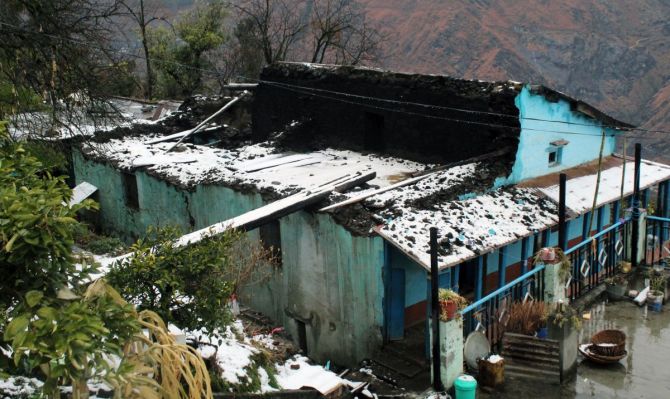
But, what is the way forward? How can these towns be saved?
These areas need to be decongested as soon as possible.
We haven't had a big earthquake since the last 500 years, but research shows that seismic activity is shifting towards the western Himalayan region. An earthquake of a slightly higher magnitude than what we experience regularly is going to be catastrophic -- not just because of the fragility of the region, but because of how densely we have occupied it.
The trigger will have a cascading impact.
Uttarakhand state is just 22 years old. Our planning and development processes have ignored the mountain characteristics.
There are large infrastructure projects being undertaken. We are making a railway track right up to Karnaprayag. There is a lack of connect between the policymakers, the communities and the scientific research organisations.
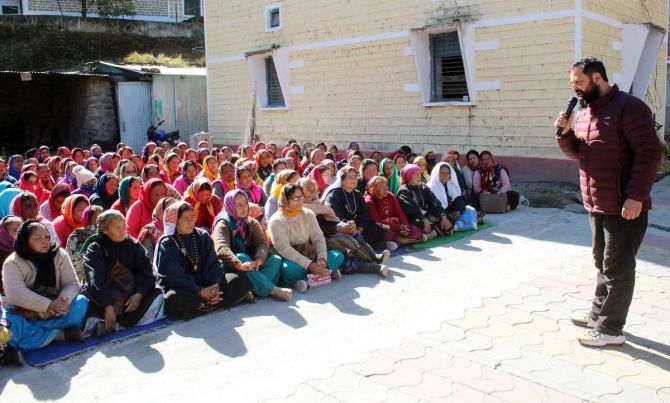
The state capital is home to many scientific and geological research organisations -- why then does it appear that policy formulation is not in step with scientific data produced in the Himalayan region?
There is no dearth of information. Several national research organisations are located in Uttarakhand. There is the Himalayan Institute of Geology, Indian Institute of Remote Sensing, Forest Research Institute, IIT-Roorkee, Geological Survey of India -- but there is a lack of connect.
The point is why are these kinds of plans being approved in the first place? It is either because we are stuck to the esoteric style of working and even if we have a very important piece of research, we will not take it to the policymaker, or that the policymaker will include scientists or researchers just for cosmetic reasons and the communities will not be involved at all.
When the community is not involved, their voices are not heard as much as they should.
Those who know the problems are creating a small buzz in different platforms, but they're just individuals.
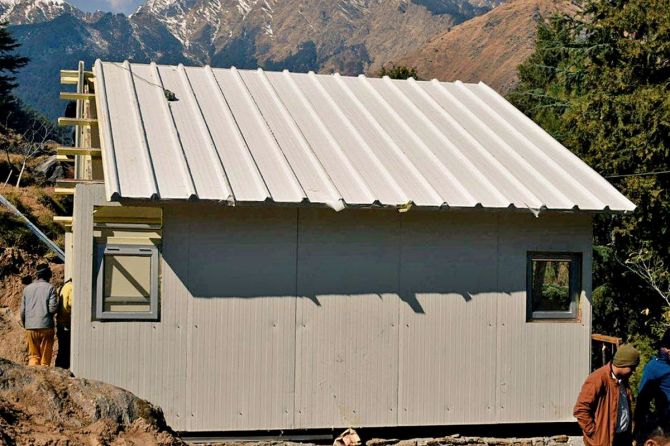
There has been criticism about the tunnelling activity in the Himalayan region for large infrastructure projects.
How detrimental are such big projects, along with unplanned, illegal construction in the fragile area?
There is a lot of development money coming into the state.
We do not require tunnels to be taking us up to the Char Dham. These are religious places, and historically people have been going there since time immemorial.
Such seats of pilgrimage are there for a reason and cannot be created into commercial tourist spots.
But on the other hand, we have also not focused on our primary sector of the economy, which was agriculture. Hence, there is a lot of migration from the hills to the urban centers.
There are limited urban centres in the state -- Dehradun, Mussoorie, Nainital and these are also getting overcrowded, overburdened and are sitting on unstable slopes. The carrying capacity assessments of these places has not been done.
Mussoorie is the only place where a study was done two years ago and it indicated that the town has far exceeded the carrying capacity. Its construction pattern is not suitable for a place that is disaster prone.
There are multi-storied buildings in Mussoorie and Dehradun. In Nainital, one slope that collapsed about 120 years ago, where approximately 151 people died is now occupied by almost 15,000-20,000 people.
In geological timescale it is not even a second ago that this landslide happened.
That area is considered as an unsafe zone, all the buildings restrictions and bylaws exist, but yet houses are mushrooming. Many people build homes without getting the architecture plan passed by the municipality or find a mechanism to get around the norms.
Then when some disaster takes place, the entire responsibility comes upon the government to respond. There are people with vested interest who allow these of things to happen. The entire system is such that we have not bothered to care about the environment and our memories are very blurred.
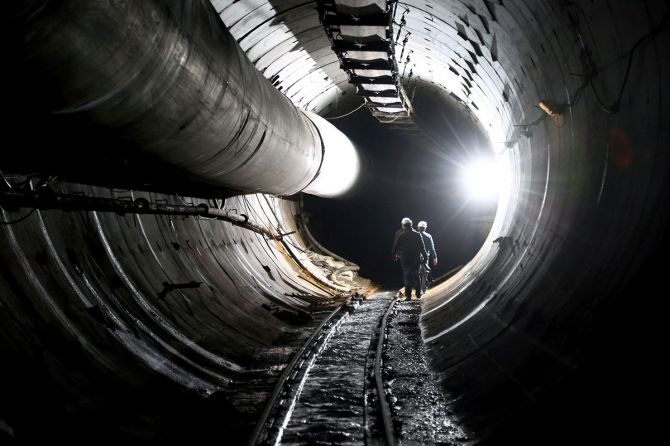
Landslides and flash floods occur regularly in the region causing destruction and death, yet why does it appear that no lessons are learnt from tragedies of the past?
Every year there is a massive landslide where hundreds of people die; flash floods are recurring. The Chamoli disaster happened in 2021 and the entire world is aware of the Kedarnath flood tragedy in 2013. We know how delicate this place is, but we still do not learn from what has happened in the recent past.
In in my view, one has to step back if you really want to make a meaningful change. The first step is to decongest.
Yes, there are human emotions involved and people will not like to leave their homes, but sometimes you need to put reason above emotion. Decongestion is a must because the cost of not doing so is the loss of lives.
If people die in a catastrophic event, then rescue is very tough in a mountainous terrain.
We need to set a limit to urbanisation. We need to return to the successful traditional practices of the past which we have completely replaced.
Our traditional housing in this region would be made of wood and stones, but we have started putting slabs of concrete.
The construction pattern is such that it is going to collapse with even the slightest movement in the earth. Those movements are triggered by big projects that need regular blasting which create small tremors resulting in a ripple effect.
The story of Joshimath is basically of poor governance, bad planning and apathy towards the natural environment.
 IMAGE:Vishal Singh Photograph: Seema Pant for Rediff.com
IMAGE:Vishal Singh Photograph: Seema Pant for Rediff.comThere are reports of cracks in Karnaprayag, Badrinath as well. What can and should be done urgently to address these worrying signs?
Joshimath was highlighted by the media for 10 days or so. Slowly, the rest of India will forget it. Those affected would continue to engage with the government.
The voices of people need to come together. We need to sit down and deliberate about every possible aspect by bringing in experts. The plan needs to be owned by the people in future -- but this is not the process that we are following.
We need to decide whether the tunnelling in Joshimath is required or not. We need to decide whether we are able to handle that kind of footfall in Kedarnath, Badrinath in case a tragedy happens.
Leave alone a natural disaster, even a stampede would result in the loss of many lives.
When there is limited space in a fragile area then there must be a limit to the number of people congregating at a given time.
On the other hand, there is a huge amount of economy coming to the state through this kind of tourism. Our drawback is that we have not developed other areas of tourism -- we're still limited to Mussoorie and Nainital. Only a few people are reaching the higher areas which are very beautiful and can be sustainably managed.
Tourism activities can be promoted in those area which was the idea when the state was created. It was thought that people in the remote areas could also benefit from the natural capital of the state.
This does not require engineering efforts or huge amounts of money; it requires a little publicity and decent amount of nature-based infrastructure.
Feature Presentation: Aslam Hunani/Rediff.com

